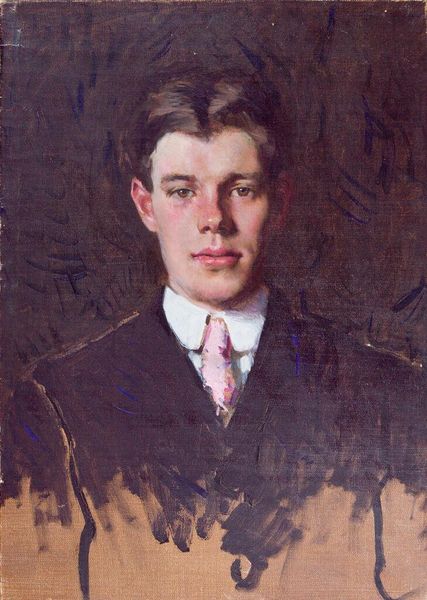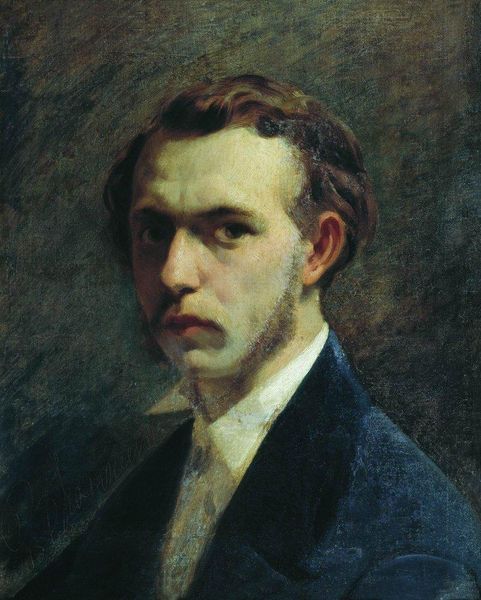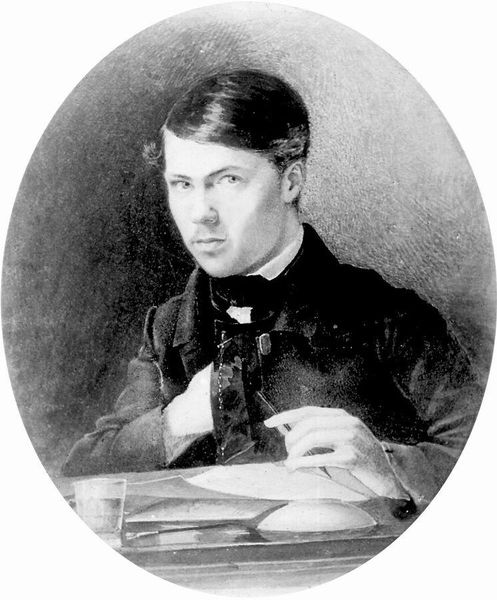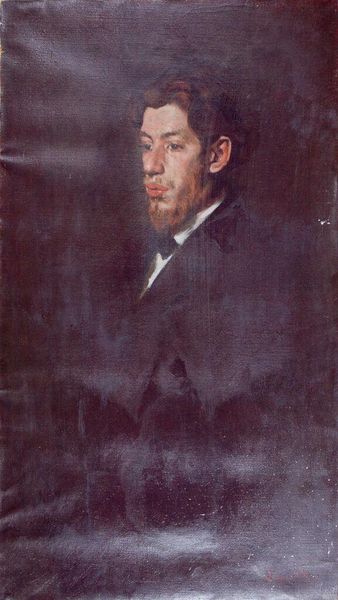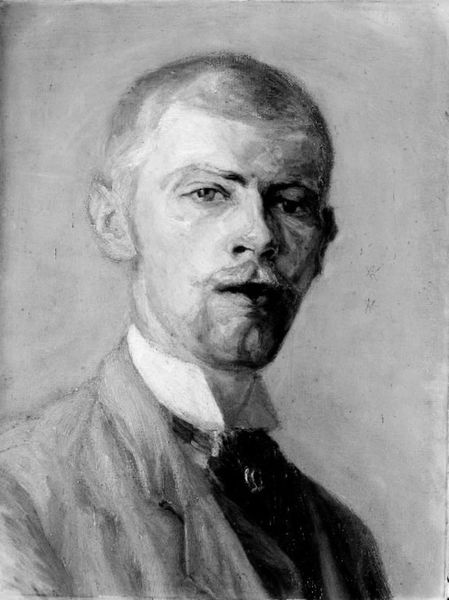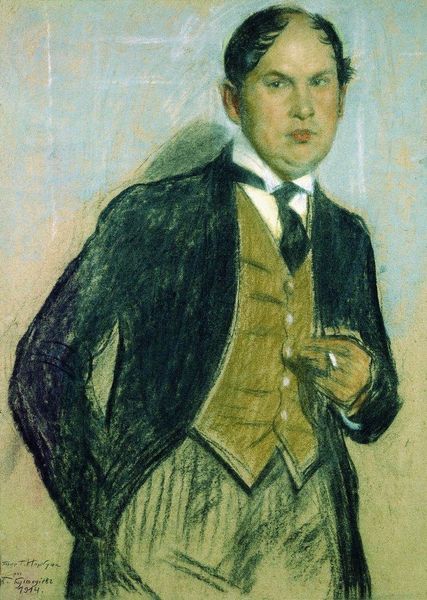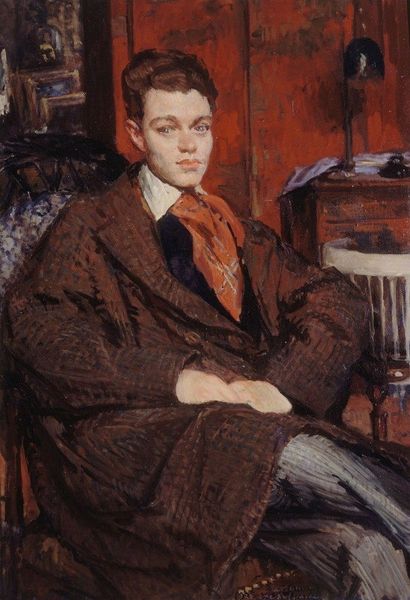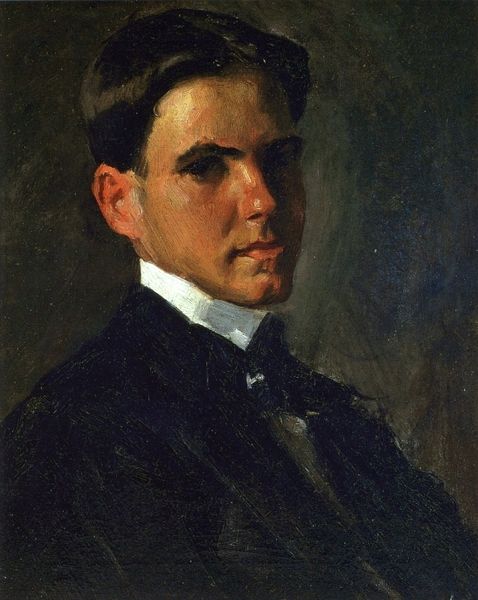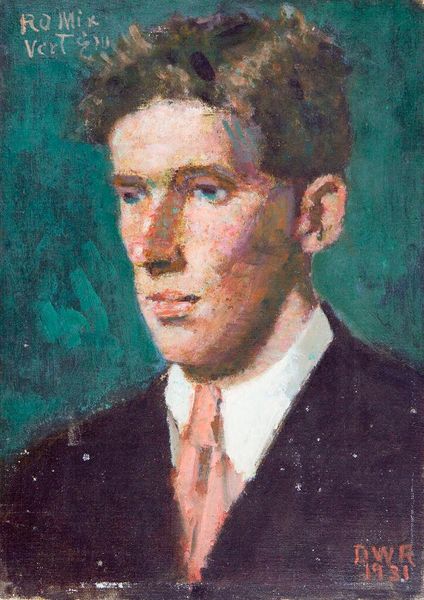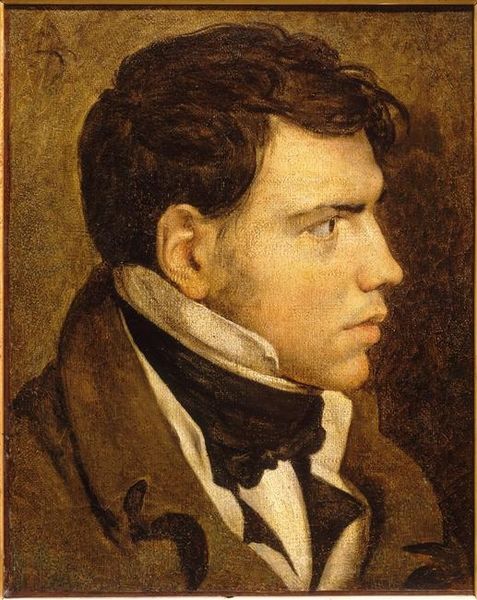
Copyright: Public domain US
Editor: Here we have Edward Hopper's "Self-Portrait" from 1906, an oil painting currently residing in the Whitney. The overall effect, to me, is one of stark self-regard. What do you see when you examine this painting? Curator: Note how Hopper articulates form through value contrast, rather than relying heavily on hue. Consider, for instance, the planes of the face, sculpted by subtle shifts in light and shadow. The restrained palette further directs our focus to the composition’s underlying structure and materiality. Observe, also, how the artist has created tonal variations through the oil paint itself. How do these elements affect the expressive qualities of the portrait? Editor: It definitely gives it a severity. I hadn't considered the tonality so closely. So it's about the relationships between light and dark, how the tones are used, more than the color palette itself. It does seem very structured. Curator: Precisely. And isn’t it striking how Hopper creates depth? The limited colour spectrum accentuates his command of gradations. The dark background enhances the dramatic illumination of the artist’s countenance. What implications does the strategic positioning of the light have on our reading? Editor: That the artist seeks self-knowledge? Exposing himself to our—and his own—gaze? It makes the observation unavoidable. Curator: I find your comments insightful. The power is in the interplay of light and dark, not just a replication of an image but the orchestration of form, tone and value for visual impact. Editor: Thanks for helping me see this with fresh eyes. I’ll never look at Hopper the same way again!
Comments
No comments
Be the first to comment and join the conversation on the ultimate creative platform.
